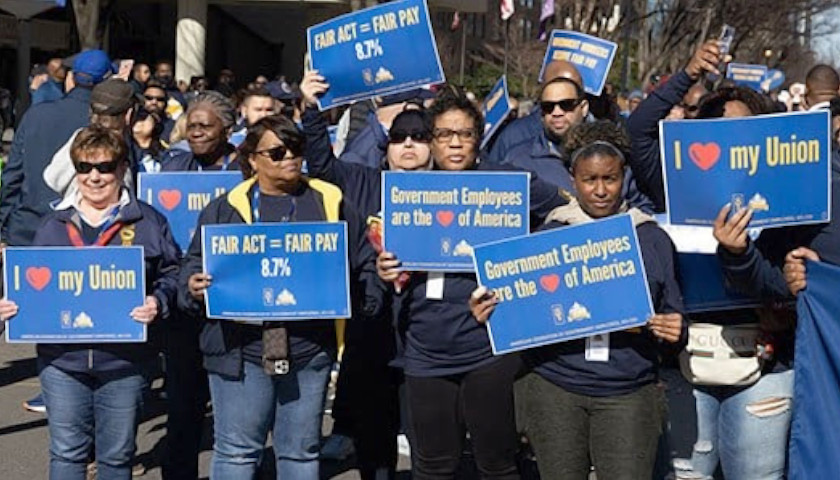by Edward Ring
Money doesn’t guarantee victory in political campaigns. For proof, look no further than Meg Whitman, the California billionaire who in 2010 squandered $179 million in her futile campaign to beat Jerry Brown and become that state’s next governor.
When money is married to institutional power, however, it makes all the difference. This is why, 10 years after the Whitman debacle, Mark Zuckerberg was able to purchase the presidential election outcome in 2020 for $419 million. Whitman’s money paid consultants and bought ads on television. Zuckerberg’s money went to supplement the activities of election offices in swing states – election offices that employed workers represented by unions that overwhelmingly favor Democrats over Republicans.
This is a critical distinction. Imagine if a pro-Republican billionaire had, like Zuckerberg, poured hundreds of billions of dollars into “nonpartisan” nonprofit organizations that in-turn used that money to launch get-out-the-vote campaigns in areas heavy with Republican voters. What are the chances the election offices in these cities would have cooperated?
Consider Maricopa County in Arizona, the City of Philadelphia, or the City of Detroit. Election office workers in these cities, and many others around the country, are represented by AFSCME, the American Federation of State, County, and Municipal Employees. In 2020, according to Open Secrets, 99.7 percent of AFSCME’s political contributions to federal election campaigns went to Democrats. Nationally, labor unions in 2020 spent a reported $1.8 billion on political campaign contributions, and of the public sector union share of that spending, 89 percent was spent to support Democrats.
Public sector unions don’t merely engage in political spending, their members occupy the bureaucracies that manage our elections. There are only five states that prohibit collective bargaining by public employees, Texas, Tennessee, North Carolina, South Carolina, and Georgia. The situation in Georgia exemplifies the power of these unions, because even there, while unions are not able to bargain, they still are still permitted to recruit members and collect dues.
There is an inherent conflict of interest between the employees of government agencies and the interests of the general taxpaying public. When government programs fail, the natural inclination of a government employee is to protect their job security, which means they will claim not enough people were hired, not enough money was spent, and if more taxpayer dollars can get thrown at the problem, results will improve. This may or may not be true, but a taxpayer is much more likely to support programs that succeed, and to cancel programs that fail. From the perspective of a government bureaucracy, and the ambitions of the career bureaucrats that staff it, failure is an opportunity for growth and advancement.
This alone is reason enough to outlaw public sector unions. When a union agenda overlays onto what is already a built-in bias towards more government as reflected in the sentiments of government employees, that sentiment is buttressed with financial and political power, at the same time as it is corrupted further by the traditional union rhetoric that foments an adversarial relationship between employees and management. Which brings us to the next fatal flaw afflicting government unions, the fact that they elect their own bosses.
Political spending by government unions inevitably favors the candidates who will advocate for bigger government: more laws, rules, regulations, fines, fees, and taxes. That fulfills the ambitions of the union and its members: more money, more staff, more programs, translating into growth in membership dues and public employee compensation. When government unions negotiate for better pay and benefits, the politician sitting across the table knows that if they resist, they will be targeted for defeat in the next election. In any close race, and even in races where the incumbent would ordinarily have an advantage, the injection of union money will make the difference. There is no comparison in the private sector, where management is appointed by shareholders, and is retained or dismissed based on the success of the company, not the preferences of the unions representing its employees.
Unions in the public sector differ from private sector unions in another critical respect, which is that in their negotiations for better pay and benefits, they are not constrained by market realities. In the private sector, unions know that if they ask for too much, it will leave the company unable to compete, and this has a self-limiting effect on what they ask for. There is no such constraint on public sector unions. When they ask for increased pay and benefits, they know that the politicians they have elected will either raise taxes to grant these demands, or face defeat in the next election.
The consequences of allowing public sector unions to completely dominate a state can be seen in California, where public sector unions now collect and spend nearly one billion dollars per year in membership dues. The control this brings is easily verified. To fund the 2020 campaign to elect the Speaker of the California State Senate, Toni Atkins, every one of the top 10 contributors was a public sector union. For the Speaker of the California State Assembly, Robert Rivas, every one of the top 20 contributors was a public sector union. This dominance is seen across every elected office in the state.
In California, public sector union money is used either explicitly to fund political campaigns all the way from the governor and U.S. Senators down to every local elected position including school boards, city councils, county supervisors, water agencies, public utility commissions, transit districts, judgeships, etc., or is used to fund “nonpolitical” public education campaigns and “nonpartisan” get-out-the-vote campaigns. The result? California has the highest taxes, the highest cost-of-living, and the highest rate of poverty and homelessness in the nation. But for government unions, failure is success.
California is also the epicenter of high tech, and the ability of Google and Facebook to manipulate public opinion and voter turnout in elections is well documented, as is the propensity of these companies to support Democrats. But this behavior, decisive as it may be, would not be a match for the power of union-controlled government if it were out of alignment. Just as the unionized, overwhelmingly Democrat federal bureaucrats during the Trump administration actively thwarted his policy agenda and executive actions, if big tech were using its power to promote Republican candidates and causes, agencies, regulators, judges and politicians would swiftly find a way to stop them cold.
There is an innate incentive for government employees to want to grow government. This makes any political party or politician that is devoted to the principle of limited government automatically their enemy. To add to that inevitable and perennial conflict the power of organized unions tilts the balance and rigs the game.
Public sector unions are one of the root causes of government overreach and inefficiency in America today. As long as these unions can use their financial and political power to serve the interests of government bureaucrats, proponents of limited government are fighting a nearly impossible battle. They should be outlawed.
– – –
Edward Ring is a contributor to American Greatness.







